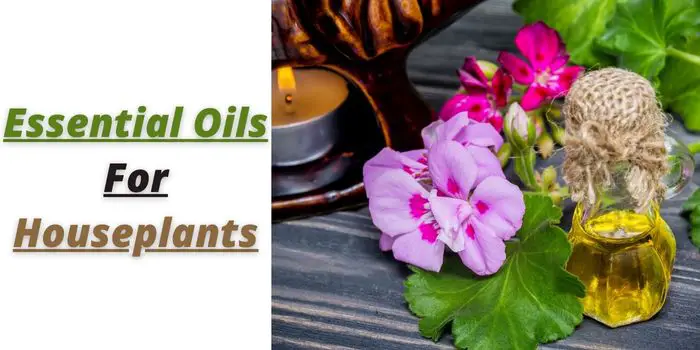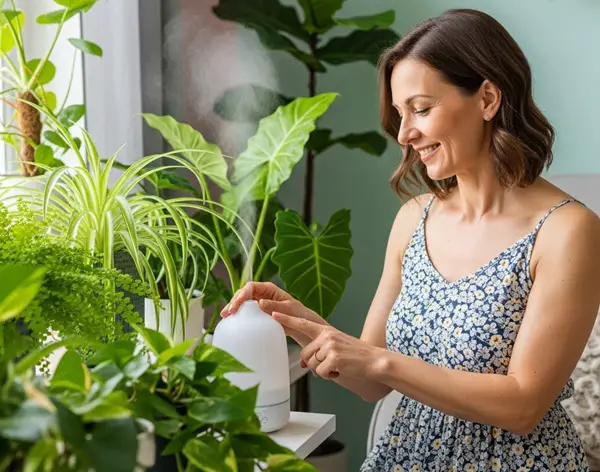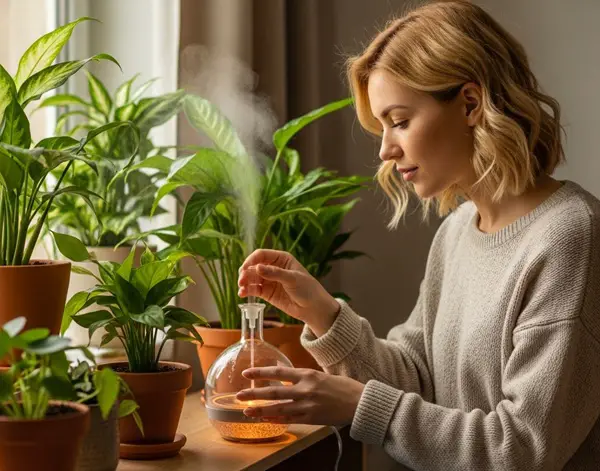
As someone who loves both essential oils and houseplants, I used to worry whether running my diffuser might harm my green friends.
After all, what’s soothing for us might not always be safe for them, right?
The good news is that essential oil diffusers can be safe for plants when used with care.
But it’s not as simple as just plugging one in and hoping for the best.
In this article, I’ll break down the facts, share what I’ve learned from my own experience, and help you understand how to use diffusers without putting your plants at risk.
Is Using Essential Oil Diffuser Safe for Plants?
After experimenting and doing a bit of research, I discovered that you can enjoy the benefits of essential oil diffusers without compromising your indoor jungle.
In fact, when used correctly, diffusers can create a soothing atmosphere for both you and your leafy companions.
However, you should remember that just like people, plants can react to strong scents or compounds in the air. Some essential oils may be harmless, while others could potentially affect your plant’s growth or health if used excessively or improperly.
So, here are a few tips to use essential oil diffusers safely around plants…
1- Use oils known to be plant-friendly – If you want to pick the top beneficial oils for plants that are safe, choose milder oils like lavender, lemon, or frankincense.
Some essential oils, like peppermint, clove, cinnamon, oregano, and eucalyptus, are strong antimicrobials and can be spicy. While this is great for cleaning the air, they could harm beneficial microbes in the soil or even stress sensitive plants.
Besides picking the right oil, you also want to make sure that the oil you’re using is 100% pure therapeutic grade and doesn’t contain any synthetic ingredients. This way, you know that it’s not going to do any harm to your plants.
2- Keep some distance and ensure good airflow – Diffusers release fine mist particles of essential oils into the air. If the diffuser is too close to the plant, these particles can settle on the leaves and block pores (stomata), disrupting gas exchange.
So, it’s good to place your diffuser at least 2–3 feet away from plants to reduce direct mist contact. Also, try to use a fan or open windows to circulate air. This prevents the oil particles from accumulating and affecting plant health.
3- Diffuse in moderation – Run your diffuser for short intervals (15–30 minutes) a few times a day, not continuously for hours near plants.
4- Observe plant reactions – If you notice leaf discoloration, curling, or a sticky residue, reduce or move the diffuser. These may be signs of sensitivity.
5- Never apply essential oils directly to plants – Even diluted, oils can damage leaves or roots. Always use a diffuser or room spray—never drop oil on the plant or into its soil.

Benefits of Using Essential Oils for House Plants
Essential oils do more than just make your home smell wonderful—they can also offer surprising benefits to your indoor plants when used thoughtfully.
Depending on the type of oil and how you use it in your oil diffuser, your leafy companions can thrive in more ways than one.
Here are some plant-friendly benefits of essential oils:
1- Purify the Air Around Your Plants
Essential oils like lemon, tea tree, or eucalyptus can help cleanse the air, neutralizing airborne toxins from cleaning products, paints, or synthetic air fresheners.
This creates a healthier environment not just for you, but also for your plants, especially those sensitive to indoor pollutants.
2- Encourage Healthier Growth
Some essential oils have natural properties that can stimulate plant growth when used correctly (for example, in diluted sprays or in a soil-safe mix).
Oils like rosemary or lavender may support stronger, more vibrant plants, thanks to their antifungal and antibacterial qualities.
3- Naturally Repel Pests
Many essential oils act as natural insect repellents when diffused carefully around them.
Peppermint, citronella, and clove oils can deter common pests like aphids, spider mites, or even fungus gnats, without harming the plant. This makes them a gentle alternative to chemical pesticides.
4- Boost Plant Immunity & Vitality
When used sparingly, certain essential oils can help strengthen a plant’s natural defenses, protecting against diseases and supporting quicker recovery from stress.
For example, a diluted spray of “thieves’ oil” blend can add shine to leaves while helping ward off pathogens.
5- Attract Beneficial Pollinators
Outdoors or in sunrooms, sweet-smelling essential oils like ylang-ylang or geranium can attract butterflies and bees, important pollinators for flowering plants.
While this may be more relevant in garden setups, it’s a nice bonus if you keep your plants near windows or balconies.

Is a Humidifier or Diffuser Better for My House Plants?
If you’re anything like me, you probably love turning a cozy corner of your home into a little green sanctuary. And just like us, our houseplants thrive in the right environment, especially when it comes to humidity. So, what’s better for them: a humidifier or a diffuser?
Let me break it down for you based on my experience and research.
Diffuser as a Mini-Humidifier – Can It Work?
Yes, you can use a diffuser to add some moisture around your plants, especially in smaller spaces like a plant shelf, bathroom garden, or a single plant nook.
Think of diffusers as mini-humidifiers with a twist: their main job is to spread scent (essential oils), not to change room humidity in a big way.
If your goal is to gently humidify a small area or boost the humidity around a single plant, a diffuser with plain water can definitely help. I’ve placed mine near a fern, and it added just enough moisture to keep the leaves from crisping up.
When a Humidifier is the Better Choice
That said, if you’re dealing with multiple plants or a larger space, there’s no doubt: a humidifier wins hands down. It’s built for this exact job.
- It has a bigger water tank, so you don’t have to keep refilling it.
- It can run longer and stronger, making a noticeable difference in overall room humidity.
- And it covers a wider area, helping all your plants breathe easier, especially tropical ones like calatheas or monstera that love high humidity.
Personally, I noticed fewer brown leaf tips and healthier foliage within just a few days of using a humidifier in my living room plant zone.
Where Diffusers Still Shine? And My Honest Take
Even though they’re not humidity powerhouses, diffusers do have their charm:
- They’re small and stylish, perfect for placing on shelves or desks near your plants.
- They run quietly and can blend in with your decor (some even double as nightlights!).
- You don’t have to use essential oils—just add plain water, and it works like a mini ultrasonic humidifier.
- For those with just a plant or two, a diffuser may be all you need to create a slightly more humid micro-climate.
If you’re nurturing a full indoor jungle or have plants that demand moisture, go with a humidifier—it’s simply more effective. But if you’re just looking to support a couple of leafy friends in a small space, a diffuser can be a charming and useful tool, especially when used smartly.
In fact, I use both—a humidifier in the main plant room and a diffuser for those little corners that deserve a bit of care, too. As long as you’re thoughtful about how, where, and what you diffuse your plants won’t mind a little spa atmosphere.
Meen Smith is a nurse by profession who loves writing online, spending time with her family and caring for the elderly. She has already worked as an associate editor on various moms, babies, home appliances, kitchen, and healthy living blogs. In her spare time, she also enjoys drawing, reading/writing kindle eBooks and improving her skills a bit.
